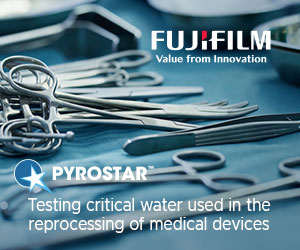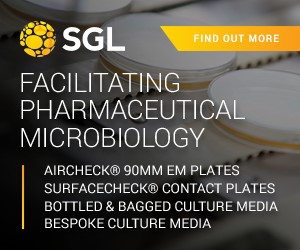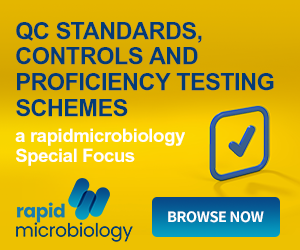Double Staining for Reliable Determination of Tuberculosis (TB)
| The number of tuberculosis (TB) cases is dramatically increasing worldwide. One-third of the world's population is infected with TB and over 30 million people will die of this disease during the next 10 years. This results in a growing demand for fast, inexpensive and reliable methods for TB diagnosis. HIV patients often suffer from TB as an opportunistic infection. |
| Merck supplies a wide variety of products for all traditional methods of TB staining, such as hot, cold and fluorescence staining. These ready-to-use staining kits and single solutions are available in various pack sizes. Some samples can present difficulties in identifying the presence of TB, the material may for example be severely necrotic. In these cases a double staining approach can be helpful. This consists of an initial fluorescence staining, followed by a second step using a classical TB stain. This technique is easy to do and offers higher diagnostic reliability for the microscopic examination. The material is prepared in the usual manner, i.e. directly smeared or centrifuged if necessary. For better differentiation, sputum should be pretreated with Sputofluol® in order to free the specimen from mucus and other interfering matter. After smearing, the specimen is dried and carefully heat-fixed to kill any bacteria present and to ensure the material adheres to the slide properly. The first fluorescence stain is performed, and even small amounts of acid-fast bacilli may be clearly visualized and reliably identified. Two ready-to-use staining kits for fluorescence TB staining are available for this step. One is Tb-fluor phenol-free, Cat. No. 101597. The kit includes staining solutions with auramine O and rhodamine B both without phenol. The kit also includes a decolorization solution and KMnO4 counterstaining solution that prevents background fluorescence. The auramine-stained acid-fast bacilli are yellow-green and the rhodamine-stained slides are red. It depends on the microscope filter system and on the preference of the technician whether auramine O or rhodamine B staining is used for the evaluation. The second kit is Tb-fluor, Cat. No. 109093, which includes a staining solution with auramine O and rhodamine B that both contain phenol. The decolorizing solution and KMnO4 counterstaining solution correspond to those of the Tb-fluor phenol-free kit. The fluorescence-stained slides are microscopically examined at high magnifications with immersion oil. After microscopic examination the immersion oil is carefully wiped off. At this stage, the slides cannot be archived as permanent slides because the fluorescence will fade. These slides can go on to the second stage immediately, without decolorization, using a classical TB staining method, either hot or cold. For hot staining, the staining kit Tb-color modified, Cat. No. 100497, is recommended, whose results correspond to those of classical Ziehl-Neelsen staining, with acid-fast bacilli deep magenta-red and a blue background. The staining kit Tb-color, Cat. No. 116450, is offered for cold staining as a user-friendly alternative. Cold staining is based on a modified Ziehl-Neelsen staining, with acid-fast bacilli deep magenta-red and a light green background. The hot- or cold-stained slides are microscopically examined at large magnifications with immersion oil. The slides stained in this way are color-stable for years as permanent slides.
For further information about the wide range of products available from Merck Millipore for Mycobacteria (AFB) detection, please contact Merck Millipore (see details above) or EMD Chemicals in the USA or click the link below. |
NOTE: This item is from our 'historic' database and may contain information which is not up to date.
Source : Merck Millipore View Company Information
Posted on November 30, 2010






